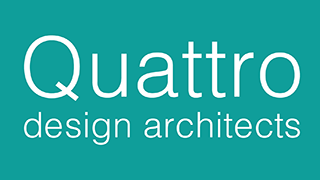As we navigate the evolving landscape of healthcare in the UK, it becomes increasingly evident that the design and construction of healthcare facilities play a pivotal role in shaping the future of patient care.
We’ll delve into the robustly procured NHS SBS Healthcare Planning, Construction Consultancy, and Ancillary Services framework (HPCCAS), exploring how it is streamlining the way healthcare is delivered.
The framework represents a commitment to excellence in healthcare infrastructure, emphasising sustainability, social value and efficiency. At the heart of this initiative lies a collaborative approach that brings together healthcare professionals, architects, and construction experts to create environments that foster healing, streamline operations, and elevate the overall patient experience.
Robert Walder, Joint Managing Director at Quattro Design Architects Ltd, who specialise in a number of sectors – including healthcare – said this: “As architects, the framework offers an opportunity to merge our design expertise with healthcare professionals' insights, shaping environments that go beyond the building’s structure, which facilitates healing, innovation, and provides a brighter future for patient care. Further, it provides trusts with an easy route to market using a trusted procurement process, gaining access to a multitude of different suppliers who can be found on the framework. Having been on the previous iteration of the framework, we’ve already worked with a large number of clients on a wide variety of different projects. One of the most positive aspects of the healthcare profession is its dedication to providing the best possible care for patients; it’s only right that we, as architects, share this passion. We are proud to have been part of this process, so far, and look forward to undertaking additional projects as part of the framework going forward.
In the dynamic world of healthcare, where needs and demands are constantly evolving, strategic planning is essential. The collaboration between healthcare professionals and architects ensures that healthcare facilities are not only aesthetically pleasing but are also designed to accommodate the latest advancements in medical technology and adapt to the changing requirements of patient care and staff requirements.
The framework places a strong emphasis on construction consultancy. The involvement of seasoned construction experts ensures that the vision conceived during the planning phase is seamlessly translated into reality. This integration of architectural expertise with construction know-how is essential in delivering projects on time and within budget; a crucial consideration in the resource-constrained environment of healthcare.
The architectural industry plays a central role in shaping the physical environment of healthcare facilities, but its impact extends far beyond aesthetics. Thoughtful design can enhance workflow, reduce operational costs, and most importantly, contribute to improved patient outcomes. The integration of architectural innovation with healthcare expertise is a powerful force, driving the evolution of healthcare facilities from mere structures to dynamic hubs of healing and innovation.
A huge benefit of using the framework is the focus on social value and sustainability. Not only did potential suppliers have to demonstrate social value commitments during the framework procurement process but will also be required to commit to specific social value initiatives as part of each contract. Furthermore, as of April 2024, every contract will require framework suppliers to have a published carbon reduction plan, outlining their own goals for net zero, to ensure these are in line with commitments made by the NHS.
Together, architects and healthcare professionals have a unique opportunity to shape a healthcare landscape that not only meets the current needs of the population but anticipates and adapts to the challenges of the future.
The framework represents a crucial facilitator for expeditious healthcare infrastructure development and provides the reassurance of cost certainty. Furthermore, by fostering collaboration, embracing innovation, and prioritising patient-centric design, we can collectively create healthcare facilities that are not just buildings but beacons of hope and healing. The future of healthcare architecture in the United Kingdom is bright, and together, as architects and healthcare professionals, we can continue to build a healthier, more resilient nation.
Quattro Design Architects, one of the architecture practices on the current framework agreement, remains steadfast in its commitment to sustainable designs, which enhance patient outcomes and provide a positive working environment for staff. In addition to its dedication to sustainability, Quattro also places great emphasis on designing creative buildings, implementing innovative design ideas and working collaboratively with clients.
